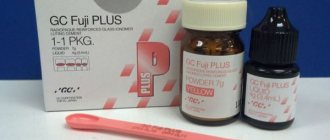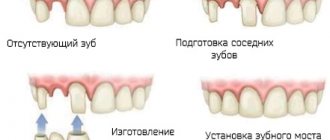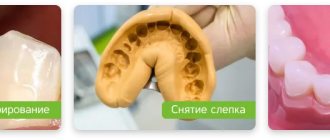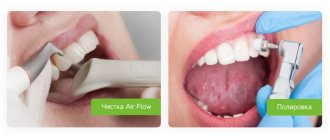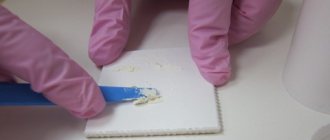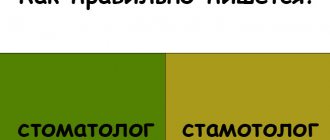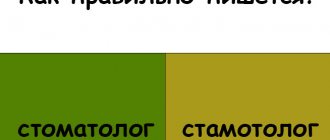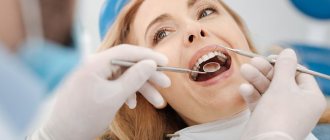General characteristics of the material
Dental cement
It contains powder and liquid, when mixed, a paste-like mass is formed.
Dental glass is used to mix dental cement .
An accompanying attribute is dental glass for mixing cement, available without a hole, with 1, 2, 3 holes
During the hardening process, the mass begins to harden and becomes like stone. Hardening occurs as a result of the components entering into a chemical reaction.
The main indicators that high-quality dental cement
, the following:
- mixing time;
- work time;
- curing time.
Mixing time refers to the period of time recommended for preparing the solution. Typically this figure is 90 seconds , and it is not recommended to exceed it.
The time during which the doctor must have time to apply the mixture to the tooth and model the filling is called working time. Each manufacturer of dental cement has its own characteristics, but the average varies from 4 to 10 minutes .
The period allotted for hardening of the cement mass also varies among manufacturers. Sometimes it can take a week for the ingredients to react and cause hardening. An important role in the setting of the material is played by the temperature and mixing proportions of dental cement.
with liquid.
How to choose composite cement?
E. M. Ioffe
Candidate of Medical Sciences, Doctor of Dentistry (DDS, PhD)
Direct restorations account for approximately 96% of our market. Most dentists, in one way or another, associate their activities with direct dental restoration - the most common intervention. At the same time, indirect restorations offer much greater possibilities and better esthetics for our patients.
Porcelain and glass-ceramic crowns and bridges are constantly being improved. These are not only metal-ceramic structures, but products created on a zirconium base, on the basis of aluminum oxide, lithium disilicate, composite, etc. Some of them are manufactured by layer-by-layer application of material to the base, others are a solid structure obtained on a computer-controlled machine (CAD/CAM).
The strengthening of fixed structures is of particular importance: we strive for the durability of our restorations, especially when it comes to active rehabilitation of the oral cavity. As the strength of ceramics increases, its strengthening plays a special role due to certain difficulties in preparing the substrate and bonding it to the tooth. Crowns, veneers, inlays, etc. require our special attention when they need to be permanently strengthened.
As with other restorative materials, we expect certain properties from our cements:
Compatibility with all materials.
Ligament strength.
The initial strength of the ligament is of particular importance. It should be noted that glass ionomer-based cements are not recommended for use on ceramic restorations: glass ionomer tends to absorb moisture and expand, leading to cracks and fractures of the restoration.
Compressive and bending strength.
Nature of curing (LC/SC phases).
This is especially important for self-etching cements. For many manufacturers, the first phase - light curing - proceeds normally, but the second phase - self-curing inside the crown - is not implemented, the conversion does not reach optimal values, and the strengthening, of course, is incomplete. One dentist said that once, after light polymerization and subsequent waiting, the bridge prosthesis separated when trying to remove excess cement at the edges. Although this can happen later - what we call de-cementing.
Easy
to use.
No need for an activator. As with all composite materials, particularly adhesives, an additional activator is required for self-curing or combination with dual or self-curing materials. Some manufacturers use a trick and introduce the catalyst directly into the cement. But we need the opportunity to use the cement we want, when we want, and not what the manufacturer “slips” to us.
Versatility
- the ability to polymerize and achieve maximum strength with various adhesives, and not just those that are selectively offered by the manufacturer.
The thickness
of the layer is of particular importance for the precise fit of the indirect restoration.
Since many indirect restorations, particularly crowns, today have a significant precision in fit, I recommend that you apply the cement not inside the restoration, as we are used to doing, but on the preparation. Then install the restoration, clean the edges, apply Vaseline around the edges and cover everything with foil. This will prevent the margins of the restoration from being washed away by cement early on when exposure to saliva is greatest.
Durability.
Bonding strength tends to decrease.
Therefore, it is necessary to use a material with the highest degree of conversion. Such material, for example, is DuoLink Universal.
Studies have shown that the conversion rate of this cement is the highest, especially if it is used with
AllBond Universal
. It is interesting that in this case, even if, due to forgetfulness, the material is not light-polymerized initially (in the case of an opaque base: metal or zirconium), it is completely polymerized inside.
- DuoLink Universal, BISCO (USA)
Storage stability.
We want to maximize the full potential of the material within its shelf life. In order to better understand the features of using various cements in certain situations, we need to imagine when and what we choose for various restorations and why:
For example:
Plain porcelain
- the weakest material for isolated restorations - veneers and crowns.
It has good aesthetics. The best cement for strengthening such restorations is Choice2
. It does not contain amines, which affect the change in shade of the cladding over time.Choice2, BISCO (USA)
Zirconium
- the most durable material, but it does not transmit light, which is necessary for light polymerization of cladding.
To strengthen zirconium-based restorations, it is necessary to use the Z-Prime Plus
, which creates a chemical bond between the substrate and the cement. The best cement is DuoLink Universal in two shades: universal and milky white. It's important to note one often overlooked fact: AllBond Universal is a universal adhesive as we know it, but it is also a primer, similar to Z-Prime. It can also be applied to the inner surface of a substrate other than eMax, but, unlike Z-Prime, it must be light-cured.Z-Prime Plus, BISCO
Lithium disilicate (eMax)
- glass ceramics, a common modern material with strength and transparency, which is important for cladding.
eCement
contains both light-curing and dual-curing cement in the kit, in case the veneer is thicker than 1 mm. The cement is available in A1, translucent and bright milky colors to cover all necessary clinical situations. eMax restorations require the use of 4% porcelain etchant (hydrofluoric acid) and silane. Both eCEMENT and DuoLink Universal make it very easy to clean the edges of excess cement after consolidation of the restoration.eCement, BISCO (USA)
Like many of you, I often use BisCem
. A convenient and fast way to strengthen restorations and posts. Unlike products from other manufacturers, it does not require an adhesive, exceeds the strength of similar cements and, like all Bisco developments, is of course compatible with all substrates and restoration materials.
BisCem, BISCO (USA)
If you need to achieve maximum strength, such as when strengthening a restoration on a short implant abutment or a short core, you can use the BISFIL-2B
. This material does not belong to the group of cements, but its consistency and fluidity distinguishes it from others. Its film thickness is less than C&B self-curing cement and the strength is very high as it is essentially a very strong hybrid self-curing composite.
BISFIL - 2, BISCO (USA)
Production of filling material
When developing a high-quality mixture for use in dentistry, manufacturers strive to ensure that its composition closely resembles the natural, inherent component of the tooth. For this purpose, additives are used that divide dental cement.
into several types:
- phosphate;
- polycarboxylate;
- polymeric;
- silicophosphate;
- glass ionomer.
Each subtype of cement is used in certain cases of oral treatment. The phosphate type is used for filling teeth with increased chewing load; polycarboxylate solution is characterized by rapid hardening. Polymer cement does not leave gaps between the gums; the silicophosphate type is good for its increased plasticity properties, and the glass ionomer solution is hypoallergenic and color resistant.
From the family of dental cements: Silicin Plus, Cemilight, Cemion, Uniface-2...
When contacting your dentist, ask him what materials are used to treat your tooth.
You can also choose the type of cement yourself, having previously studied its features and consulted with your dentist about the advisability of using it. Moscow metro station Zvezdnaya, Danube Avenue, 23
Types of dental cements for fixation of fixed dentures and crowns - classification
Today, the dental clinic market offers a lot of different compositions that are used to permanently secure permanent crowns and dentures in the patient’s oral cavity.
There are four main types of cement identified through experiments conducted by scientists and specialists over the past ten years. Their classification depends on the type of binding component present in the matrix and the specific indications for use.
But, nevertheless, cement for fixing crowns, etc. is divided into several main groups, presented:
- Zinc phosphates.
- Polycarboxylates.
- Glass ionomers.
- Composites.
- Polymers modified with glass ionomers.
Requirements for cements
- Resistance to the environment present in the oral cavity.
- Strong adhesion to tooth tissues using mechanical adhesion and adhesion.
- High strength not only in compression, but also in tension and shear.
- Sufficient time for work and hardening.
- Biological compatibility with hard dental tissues.
- Low toxicity to dental pulp.
- Good radiopacity.
Possibilities of dental cement
Glue for crowns makes it possible to tightly attach the crown to the root socket and prevent it from falling out of the gums. You can buy such material in specialized stores or at a pharmacy. Each dentist prefers to use a mass familiar to him, from a certain manufacturer. It must be said that if you buy inexpensive material, you can’t hope for a positive result.
Crown adhesive allows you to:
- firmly attach the crown to the tooth socket and thereby hold it during chewing movements;
- prevent the process of tooth decay from the inside;
- create a durable protective coating that will prevent bacteria from entering the tooth.
Glass ionomer cement for fixation of crowns and fixed dentures
The liquid part of glass ionomer cement is represented by polyacrylic acid, and the powder part is not similar to those described in this material.
Aluminosilicate glass contains a high fluorine content.
Application
- Ideal for cases where the risk of developing caries due to the release of fluoride is increased.
- It has proven itself excellent among patients with moderate tooth sensitivity.
- Time is not a very useful factor when fixing long bridges.
Properties
- Excellent prevention of caries.
- Very thin film.
- Low risk of developing allergies and pulp damage.
- With not very high strength, high adhesion.
PLEASE NOTE : This material cures slowly and is very dependent on moisture.
Polycarboxylate dental cement for dentures and crowns
The main component is specially processed zinc oxide, without residual products, which reacts quickly with polyacrylic acid.
And the liquid part contains water and polyacrylic acid.
Polocarboxylates are characterized by:
- Lowest adhesiveness and strength.
- Excellent biocompatibility.
- Almost zero chance of developing allergies or irritation.
- Creating a thin layer of composition.
- Additional prevention of caries.
REMEMBER : Polycarboxylate cement for fixing crowns is ideal for fixing single crowns with increased tooth sensitivity. For all other clinical situations, there are better options.
